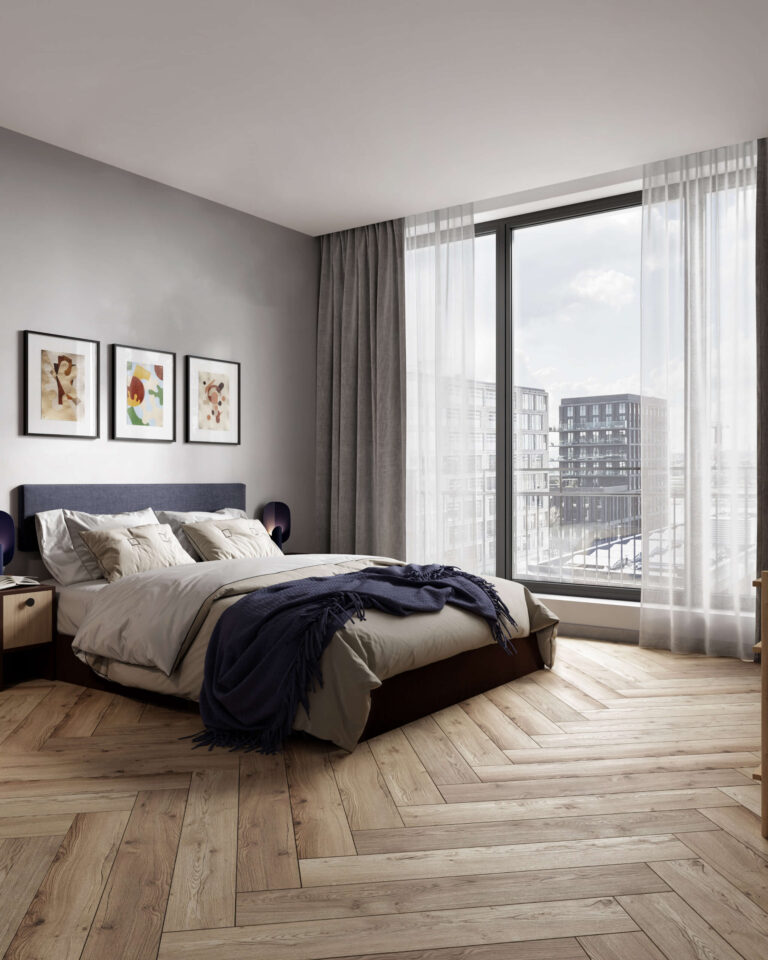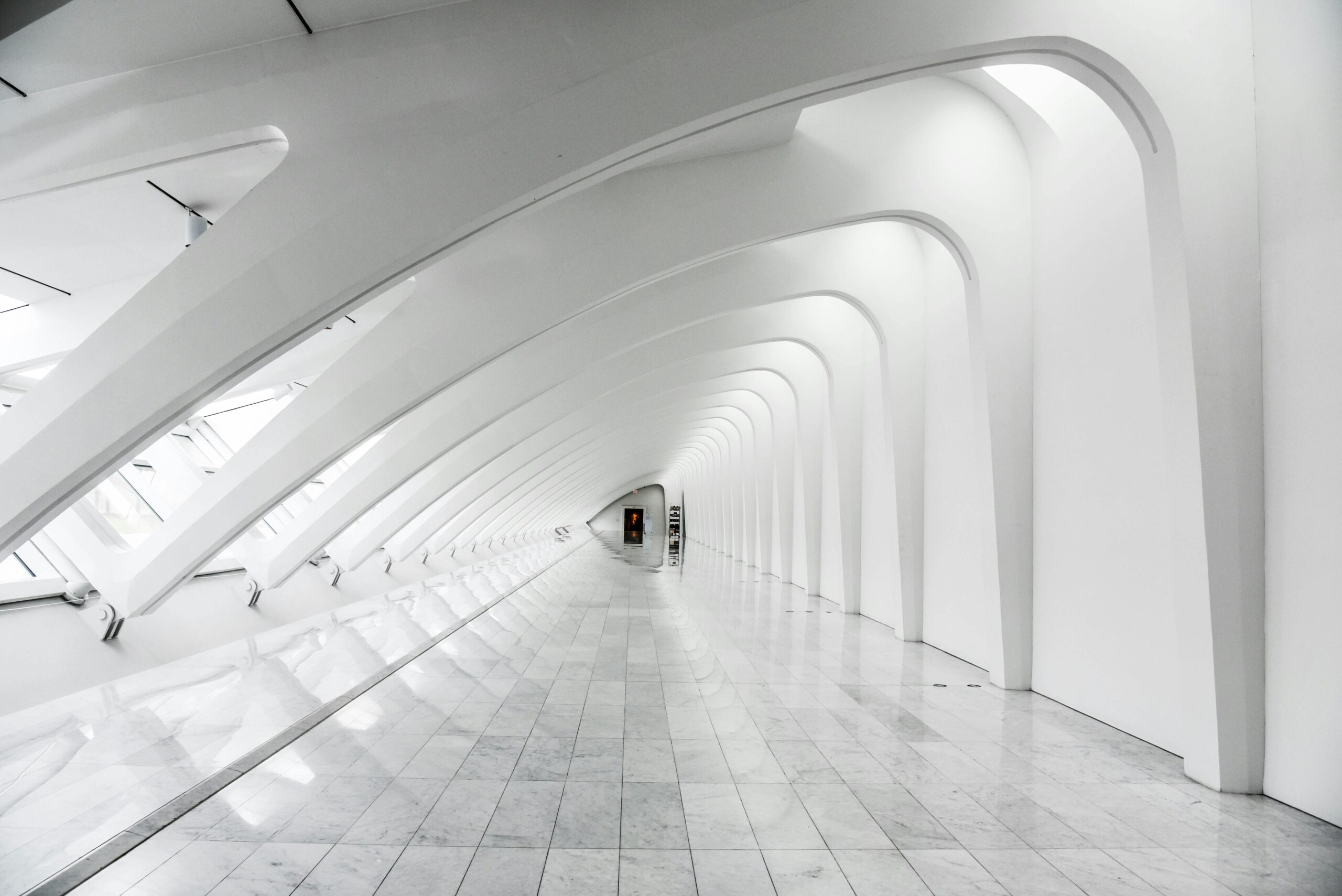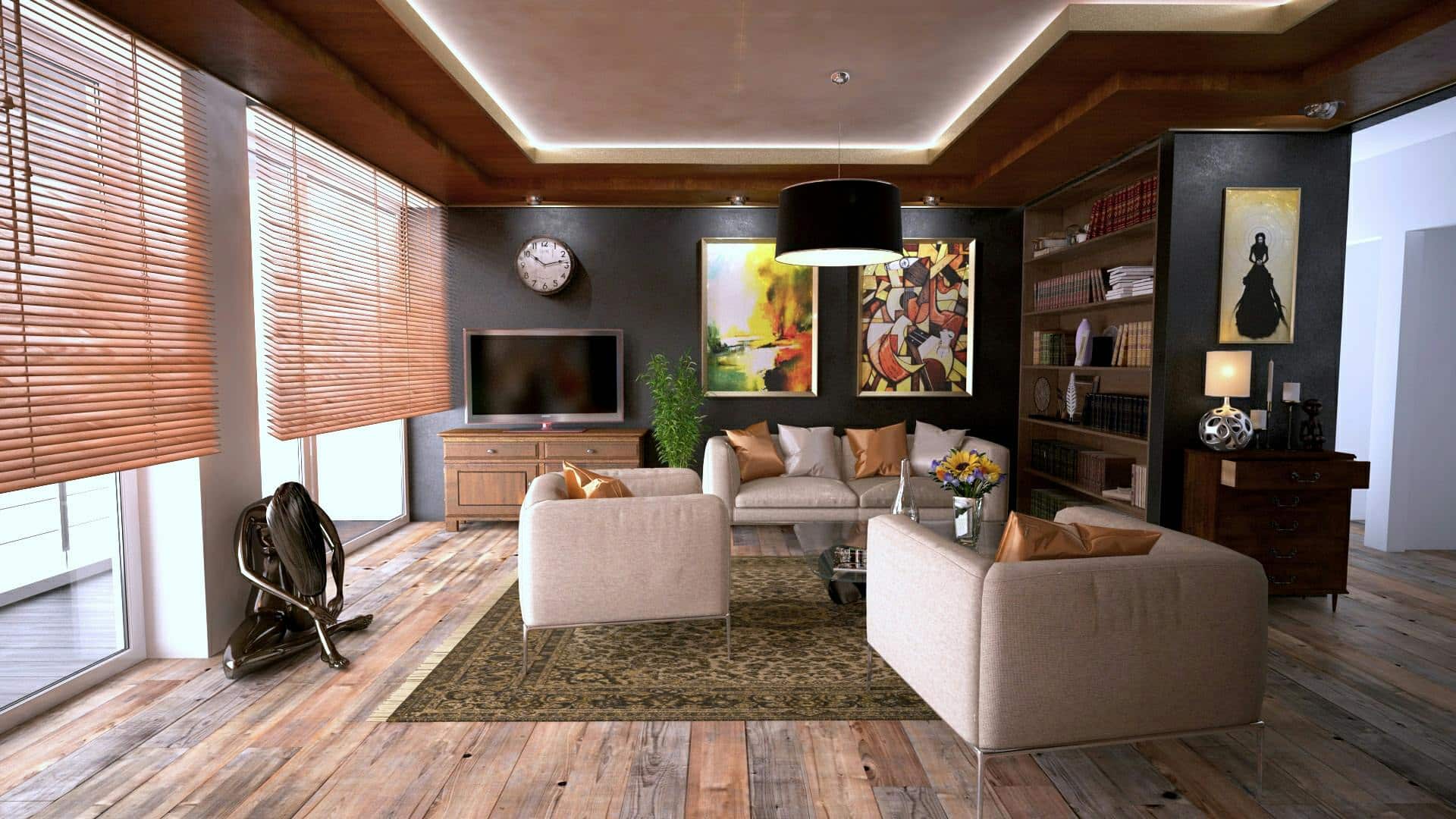Ready to showcase your creative talent to the whole world? If you consider photorealistic rendering, you are on the right track. Mastering photorealistic rendering techniques in interior design will, no doubt, take you a long way.
As we have worked in the 3D renderings market since 2011, delve deep together with us as we explore and understand the characteristics and advantages of photorealistic rendering techniques and learn its process. Reading on, you will learn about the potential challenges and possible solutions in this technique.
Lastly, we will expound on the evolutionary phase of photorealistic rendering and give you key considerations to keep in mind as you embark on this journey.
Understanding Photorealistic Rendering
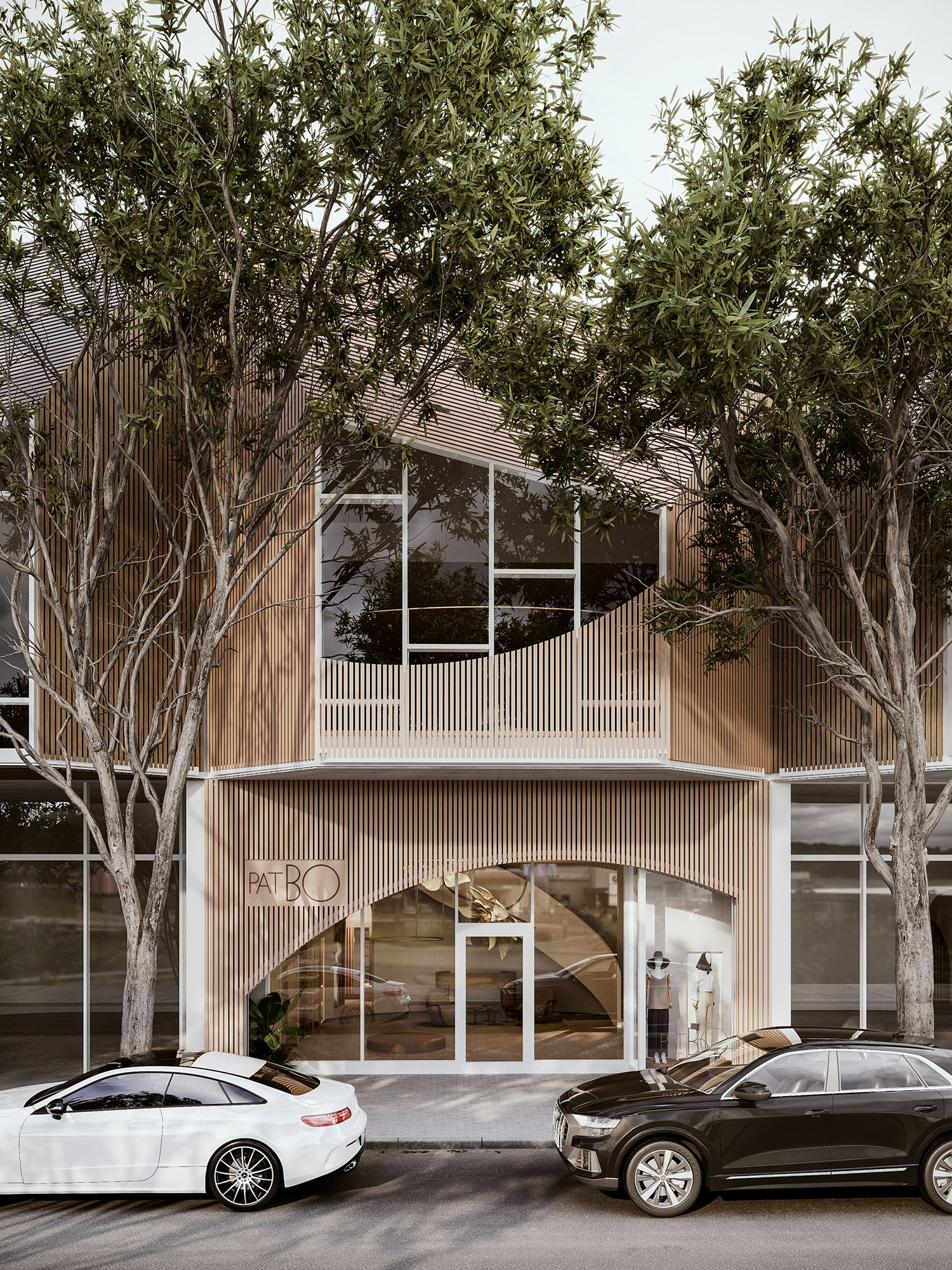
Before delving into the process of photorealistic rendering techniques, let us first understand what this method is and how it emerged.
Definition and Characteristics
Photorealistic rendering is a digital process to create realistic representations of virtual environments, objects, or spaces. The images created are remarkably close to real-life photographs that they are almost indistinguishable. As you see in the image above, this shop in Miami exterior was made completely with 3Ds Max software and no details in this rendering are real: not cars, not trees, not windows, or the facade.
The pictures designed through photorealistic rendering are marked by an astounding sense of realism – as suggested by its name as well. This realism is achieved through the interplay of light, shadow, materials, and textures.
Designers use high-resolution textures to present a convincing feel of all materials – either wood, fabric, or metal. Employing natural and artificial lighting is just as imperative to generate a credible picture, including the addition of highlights and shadows.
Evolution of Photorealistic Rendering Techniques in Interior Design
Curious about the history of today’s photorealistic rendering technique? With 3D digital processes of rendering in interior design now in vogue, it is difficult to imagine that such evolution was not prevalent some decades ago.
Interior rendering began with hand-drawn sketches of floor plans. While not as visually captivating or in-depth as photorealistic rendering, it served its purpose well. Then came 2D computer-aided design (CAD) rendering, bringing with it two-dimensional drawings and a greater precision in lengths.
With the advent of 3D modeling software, designers began presenting their ideas in three-dimensional, making them more realistic. Then came even more programs and techniques, promising advanced lighting, materials, and textures, ultimately leading to this form of photorealistic rendering technique we know today. Fascinating, isn’t it?
Benefits of Photorealistic Rendering in Interior Design

As a designer or an architect, there is nothing more beneficial than having various photorealistic rendering techniques in your arsenal. After all, with this, you can have better communication with your client, make efficient decisions during construction, save time and costs, and showcase your design talent.
1. Enhanced Client Communication
Having read about the history of interior rendering, we know that the biggest hurdle of previous methods was their lack of in-depth visualization and detail. This aspect is the most crucial advantage photorealistic rendering has over its predecessors (AutoCAD drawings, hand-drawn drawings, or sketches).
Photorealistic rendering allows you to sketch a complete three-dimensional drawing of your design, allowing your client to thoroughly envision it in its complete and truest form. Without the photorealistic rendering technique, that design vision would only remain as an abstract idea to your client. This, thereby, ensures that you both have a shared understanding.
Textures, materials, lighting effects, and spatial arrangements – you name it. Your client will be able to visualize every aspect of your design.
2. Efficient Decision-Making
The photorealistic rendering technique is a digital practice: you can scrutinize in great detail which layout, furniture arrangement, and color scheme would fit right with your design.
With a realistic virtual drawing before your eyes, both you and your client can finalize the right materials, colors, and design options before beginning construction. This further allows you and your client to make informed decisions about the envisioned design based on its functionality, aesthetics, and budget.
Another important thing to note about it is that you can also identify potential issues, such as design flaws or spatial conflicts during the design process. This significantly saves you from dealing with newly emerging issues during construction.
3. Cost and Time Savings
You might be wondering how the photorealistic rendering technique would save on cost and time of construction. Well, to answer this question, how would it not save you time and money during construction when you have already taken care of potential problems during the design period?
That’s right. Through the photorealistic rendering technique, you and your client have a shared understanding of the envisioned design, so there will be fewer or almost no revisions later on. Secondly, having taken care of all the issues that could potentially arise, there will be no time and money spent on costly repairs.
Therefore, you are now assured a steady workflow during the construction phase, with no extra time and money required for revisions or corrections.
4. Showcasing Design Intent
Struggling with showcasing your design talent? Or being unable to win over clients despite having great designs? Fear not, for photorealistic rendering technique is an effective tool in this area as well.
Creating a stunning design through the photorealistic rendering technique will make you stand out during presentations or proposal submissions. They will also make your portfolio shine more than your peers. Why? Simply because photorealistic rendering will allow the client to picture your design better than other rendering techniques.
Even if you are working online, attaching captivating designs created through photorealistic rendering techniques will elevate your social media profile, any website you have, and your marketing materials. This will, in turn, attract potential clients and boost your online presence.
Photorealistic Rendering Process
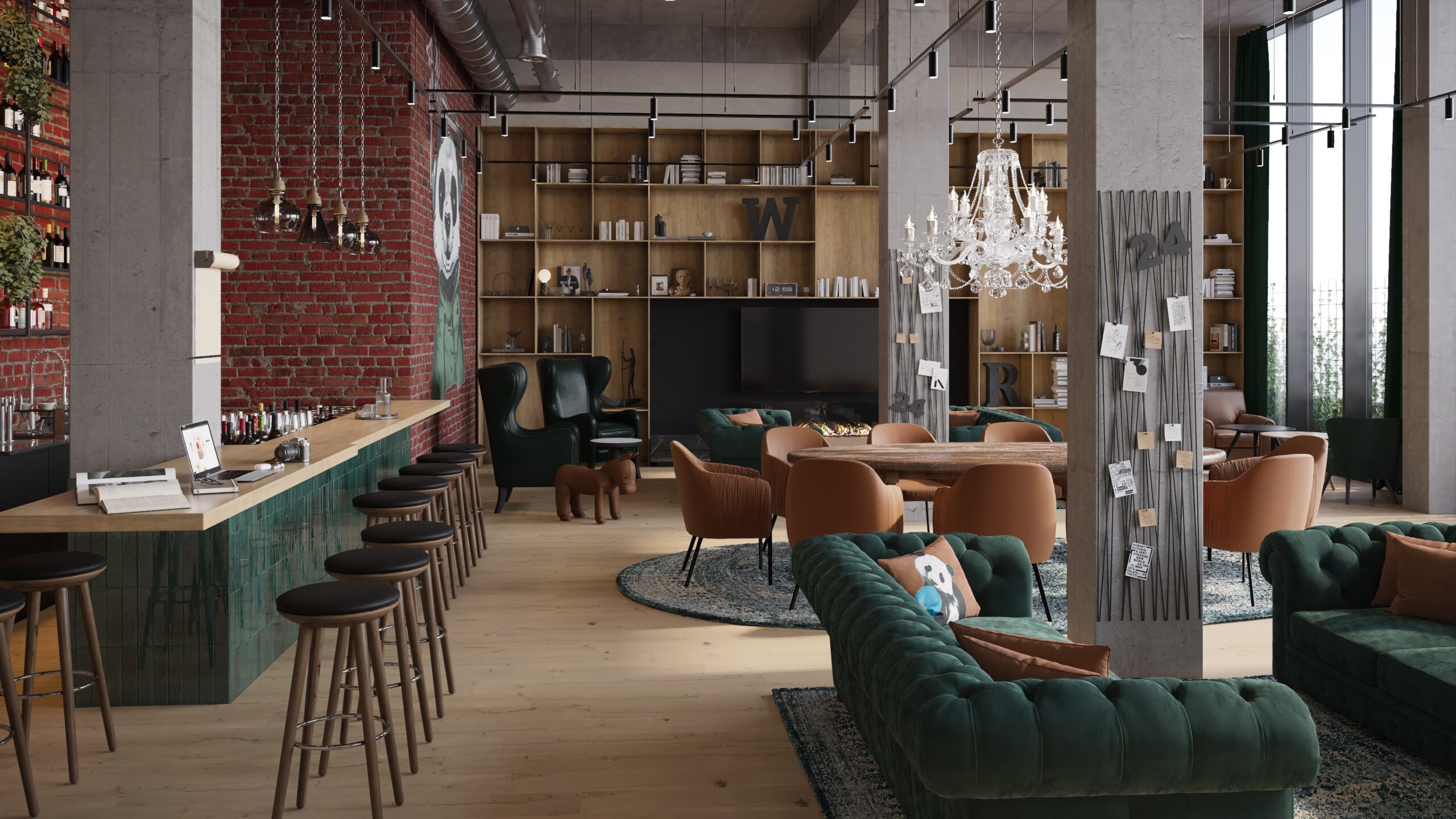
Now, getting to the main topic, let us take a look at the complete process of the photorealistic rendering technique. There are four steps in the completion of this process, namely the initial design phase, material and texture mapping, lighting strategies, and camera settings and perspectives.
Let’s explore each one of them in detail.
1. Initial Design Phase
As its name suggests, the initial design phase is the first step whereby you lay the foundation of your photorealistic rendering. First of all, you need to gather all the design specifications of your envisioned idea.
Create and gather all the concept sketches, reference images, and mood boards – these will define your overall vision. From there, you will draft the floor plans and decide the required color schemes and furniture choices.
The next step is choosing a specialized software on which you will map the design in 3D. That digital representation will include wall layouts and furniture placements while ensuring accurate proportions and spatial relationships.
Our tip to create mood boards and collect materials for your interior design: visit websites like ArchDaily, DesignBoom, Pinterest and others for inspiration.
2. Material and Texture Mapping
The next step – material and texture mapping – is vital to give life-like qualities to your photorealistic rendering. According to your design, you will select the right material for the designed space – wood, metal, fabric, whichever fits where.
After that, you apply textures. However, you cannot choose just any texture; for an outstanding photorealistic rendering, you need to choose high-resolution textures that will give life to your design. You will apply these realistic textures to walls, floors, and furniture, among other essential elements.
Lastly, for an even more notable sense of realism, fine-tune the textures to create necessary flaws – because there is no such thing as a perfect texture in real life. Adding reflectivity, roughness, and bumps will add a convincing depth.
3. Lighting Strategies
Understanding the right lighting strategies to apply is another crucial aspect to keep in mind. While material and texture mapping creates realism, lighting could make or break that realism.
Just like in real-life scenarios where we see the interplay between natural and artificial lighting, photorealistic rendering also requires you to replicate that convincing effect through the delicate balance between natural and artificial lights.
After that, you need to adjust the intensity and color of the lights according to your requirements. You also need to create shadows and highlights in appropriate places to achieve realism. Techniques like global illumination, ambient lighting, and area lights are remarkable for this purpose.
4. Camera Settings and Perspectives
A camera generally focuses on a scene from a particular angle to enhance the observers’s visual engagement. That is precisely what this last step in the photorealistic rendering technique is about.
What you need to do is select the right settings in terms of camera angle, focal length, and depth of field. While seemingly unimportant, this step is crucial in creating that cinematic quality captured by a camera. After all, the purpose of photorealistic rendering is to create designs that are indistinguishable from real pictures.
Challenges and Solutions in Photorealistic Rendering

As temptingly easy as photorealistic rendering sounds, it is not without its own set of challenges. You can easily lose sight of your uniqueness when faced with issues such as trying to create a balance between realism and your creativity, complex designs, and hardware limitations.
1. Balancing Realism and Creativity
One thing to never forget about any digital software is that they are only there to enhance your creative talent, not replace it. Therefore, don’t be overly focused on technical accuracy or hyper-realism. Excessively focusing on these aspects can easily ruin your creativity.
What you can do is selectively stylize certain elements to exhibit your artistic sense without compromising realism. This can be achieved through procedural textures, custom materials, and lighting effects.
Another way to adhere to the balance between realism and creativity is to have an open discussion with your client about the degree of realism that they require. This will ensure that you are both on the same page about their requirements.
2. Dealing with Complex Designs
Complex designs find their way into interior design, no matter what. After all, it is those complex designs that attract eyes. However, complicated patterns, curved surfaces, and organic shapes are difficult to create using photorealistic rendering software.
Nevertheless, where there are challenges, there are solutions as well. You can make use of features like adaptive sampling and level of detail (LOD). There will be a lower resource consumption if you assign hierarchies of detail levels, focusing more on the area of focus rather than the whole space.
Other methods include batch rendering, through which you can divide your rendering process into batches, making it easy for you to focus on specific sections at one time.
3. Overcoming Hardware Limitations
As pleasantly stunning as complex designs look, they nevertheless end up straining the hardware required for photorealistic rendering. Intricate details and high-resolution textures are time-consuming, thus slowing down the rendering time. They, therefore, disrupt work efficiency and productivity.
In order to tackle this, you can opt for cloud rendering, which is much faster because you can offload rendering tasks to more powerful servers in the cloud. You can also optimize complex 3D scenes by using resource-efficient textures and simplifying geometries where possible.
Evolution in Photorealistic Rendering
We have already looked at the history of photorealistic rendering. Let us now check out the current evolution going on in this aesthetic field.
1. Advancements in Rendering Technology
From hand-drawn sketches to digital designing, the photorealistic rendering technique has come a long way. There is the innovative path tracing method – an enhanced version of the ray tracing method, which, as its name suggests, portrays a realistic behavior of light.
Then, there is the AI-enhanced rendering method, which is essentially the integration of advanced algorithms and artificial intelligence in photorealistic rendering. They take care of denoising and upscaling, among other features, boosting your efficiency.
Hybrid rendering engines are yet another progressive mechanism, combining rasterization and ray tracing. This hybrid aims to foster a balanced relationship between realism and your artistic flair.
2. Virtual Reality (VR) and Augmented Reality (AR)
Virtual reality and augmented reality are evolutionary processes in the field of photorealistic rendering. As suggested by its name, virtual reality allows you and your client to immerse yourselves in a virtual, photorealistic space. With this, both you and your client can better comprehend the spatial relationships and design elements of the floor plan.
Augmented reality, on the other hand, allows for the projection of virtual designs onto a real environment. Particularly useful in architecture and interior design, you can display your design before your client in a physical space. Since clients will be able to visualize your idea, there is a higher likelihood of you securing the deal.
3. Sustainable Rendering Practices
You will be surprised to learn that photorealistic rendering techniques have now even begun to focus on energy-efficient rendering and reducing carbon footprint.
That’s right. Green rendering algorithm is one such practice that minimizes energy consumption during the rendering process. Energy-efficient hardware, such as GPUs, is also in vogue nowadays. They reduce negative environmental effects without compromising their performance.
Cloud-based rendering services also use energy-efficient infrastructure, thereby notably reducing the carbon footprint released in traditional rendering setups.
Considerations for Interior Designers and Render Artists
As an interior designer, there is no greater joy than bringing your ideas to light – photorealistic rendering is a significant tool in this endeavor. Yet, there are still some considerations that you must never forgo in your creative journey.
1. Importance of Collaboration
As an interior designer, you will be collaborating not only with clients but also with architects, render artists, and even professionals specializing in furniture and lighting design. It will be a joint effort between all related parties that will bring about fruitful results.
Therefore, you need to ensure that there is clear communication between all parties involved so that the whole team is on the same page. Secondly, the presence of diverse perspectives will naturally lead to the integration of varying ideas, which, when blended together, will create something superb.
Lastly, many hands can make light work; if you encounter any errors or issues during the design or construction phase, professionals can offer their expertise and wisdom to resolve those problems.
2. Continuous Learning and Skill Development
No matter how old you get, there is still something new to learn, especially when you are involved in a profession that undergoes evolution constantly. Interior design is one such field. With rapid progression in this digital era, digital advancements are being made in interior design as well.
In that respect, you should make sure to keep yourself updated with all news about emerging trends, technologies, and software related to your profession. This can be achieved through your regular participation in workshops, conferences, and industry events.
Another thing to keep in mind is to develop soft skills along with hard ones. As cliche as it sounds, soft skills such as leadership skills, presentation skills, communication skills, teamwork, etc. never let you down. They become your strongest assets when attracting clients.
3. Ethical Considerations in Rendering
Being an ethical professional is one of the most important considerations to never forget about. As an interior designer utilizing photorealistic rendering, it is imperative to not present idealistic visuals to your clients simply to win them over.
You need to put your client’s requirements first and foremost. Show them realistic representations while keeping in mind their demands and budget. Opt for sustainable practices, but tell them immediately if there are limitations to the design.
Most importantly, make sure to never violate any cultural sensitivity. Never present a design that does not align with their culture, belief, and faith.
Conclusion
Having read through the whole article, you now have a deeper understanding of the photorealistic rendering technique. We now know that photorealistic rendering aims to create a realistic image of an envisioned floor plan.
There are four steps in this process – namely, the initial design phase, material and texture mapping, lighting strategies, and camera settings and perspectives. Photorealistic rendering is a great tool for enhanced client communication, efficient decision-making, saving time and costs, and showcasing your artistic talent.
Nevertheless, there are also challenges involved, such as the delicate balance between realism and creativity, dealing with complex designs, and hardware limitations. Yet, there are now many advanced infrastructures for photorealistic rendering, including AI-enhanced rendering, VR and AR, and green rendering algorithms.
Last but not least, as a designer, you must understand the importance of collaboration, continuous learning and skill development, and adhering to ethical considerations.
FAQs
1. What is photorealistic rendering?
Photorealistic rendering is a digital process of creating a 3D representation of your interior design on specialized software. What makes it unique is that the image created through photorealistic rendering is so realistic that it becomes almost indistinguishable from reality.
2. What makes a rendering “photorealistic” in interior design?
Photorealistic rendering is remarkably similar to a real-life photograph. You can achieve this realism by focusing on perfecting subtle details like light reflection, shadows, materials, and textures. At the same time, make sure to leave some flaws as well because nothing is perfect in real life.
3. What are the benefits of photorealistic rendering?
You can reap several benefits of photorealistic rendering, including enhanced client communication, engaging presentations, and excellent marketing for you. Photorealistic rendering allows you and your client to point out any issues in design during the design process, thus saving you costly repairs during construction.


